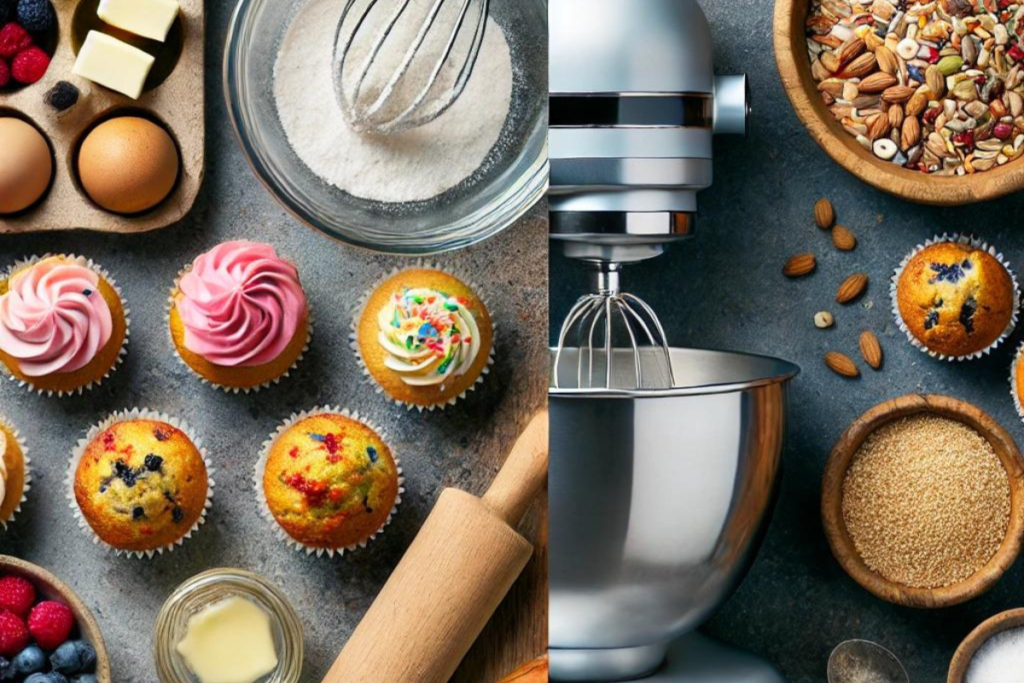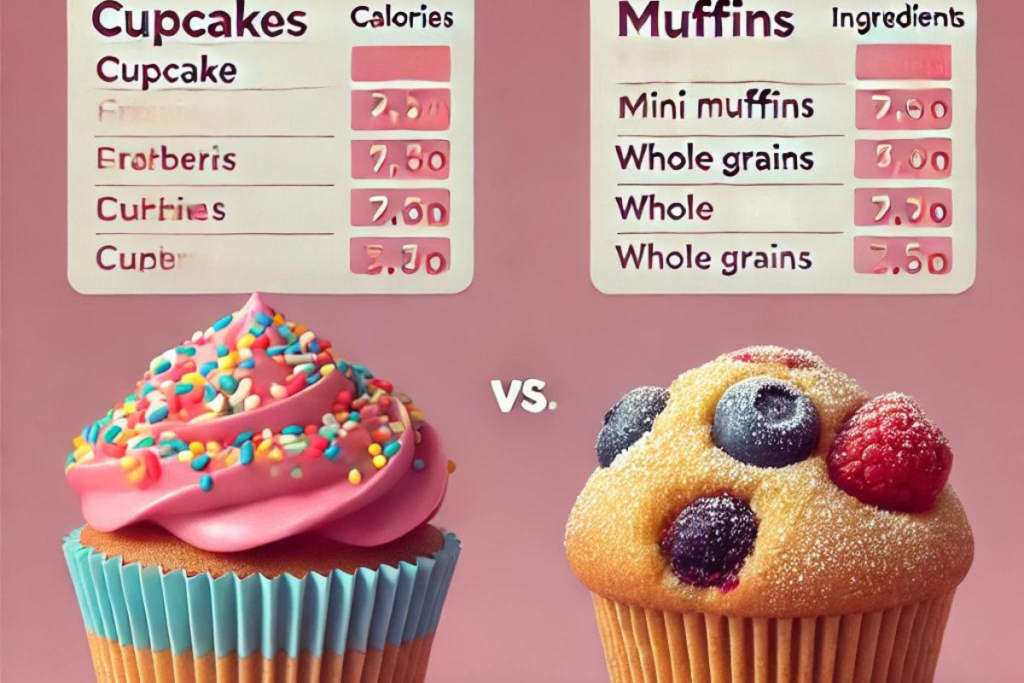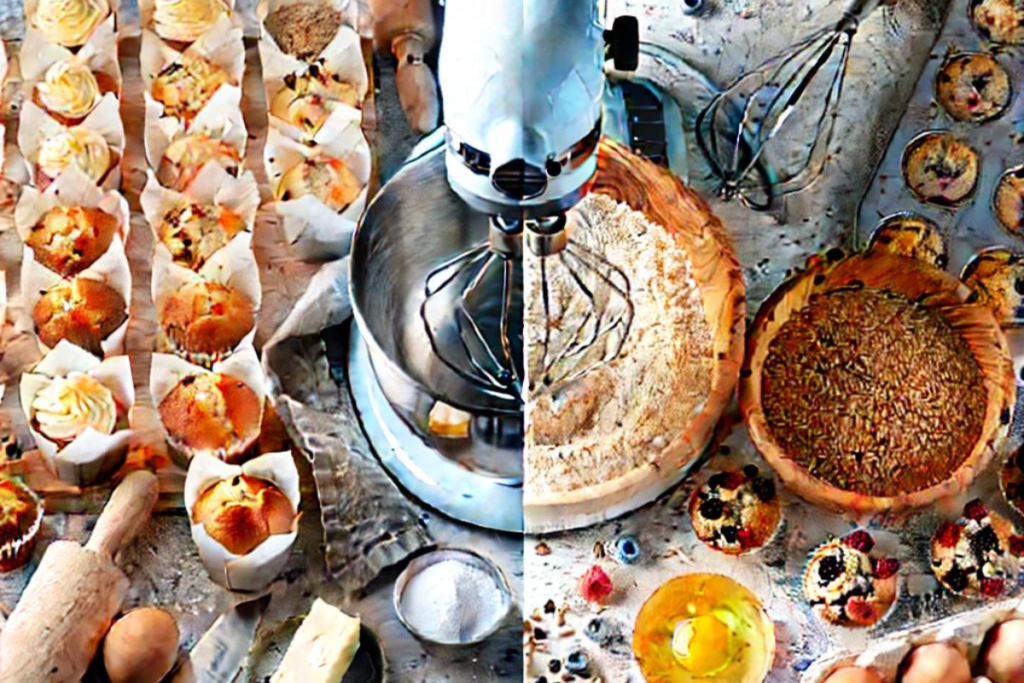When you think about small baked treats, cupcakes and mini muffins likely come to mind. Although they may appear similar at first glance, several key differences set them apart. From their ingredients to their texture, and even the way they are enjoyed, cupcakes and mini muffins have unique characteristics suited for different occasions.
Origins of Cupcakes and Mini Muffins
To start, let’s explore the origins of these two treats. Cupcakes were created as small, individual cakes, usually intended for celebrations or desserts. In contrast, mini muffins originate from quick bread, which is often enjoyed as a breakfast item or snack. Therefore, while both may seem similar in size, their origins show distinct culinary purposes.
If you’re interested in trying something with a rich cultural history, you might want to check out the history and cultural importance of Indian frybread. It offers a different kind of baked treat.
Key Ingredient Differences

One of the most significant differences between cupcakes and mini muffins lies in their ingredients.
- Cupcakes: Bakers typically use more sugar and fat (like butter or oil), making cupcakes much sweeter and lighter. Moreover, cupcake recipes often include additional ingredients such as whipped eggs to create a fluffier texture. They almost always feature frosting, which adds even more sweetness.
- Mini Muffins: On the other hand, mini muffins contain less sugar and fat. They frequently incorporate whole grains or fruits, which makes them healthier. In addition, bakers mix the batter gently, allowing muffins to develop a denser, heartier texture. Typically, these treats don’t include frosting, opting for a more rustic finish.
If you’d like to explore more about mini muffins, check out these mini muffin recipes for inspiration.
Texture and Appearance
Not only do their ingredients differ, but cupcakes and mini muffins also have unique textures and appearances.
- Cupcakes have a fine crumb and are typically moist with a soft texture, making them ideal for desserts. Furthermore, they are often topped with decorative frosting that enhances both their appearance and flavor.
- In contrast, mini muffins have a denser, coarser texture. Their dome-shaped tops give them a more rustic, hearty look, making them perfect for breakfast or snacking.
If you’re looking for more baking advice, discover tips on how to keep pound cake from being dry. These tips can help ensure that your baked goods stay moist and flavorful.
Health Comparison: Which is Healthier?

When considering health benefits, mini muffins generally come out on top.
- Cupcakes: Because of their higher sugar and fat content, cupcakes are best enjoyed as an occasional dessert. Additionally, the frosting adds extra calories, making them a less healthy option for everyday eating.
- Mini Muffins: In contrast, mini muffins often contain fruits or whole grains, making them a healthier choice. With lower sugar content and more wholesome ingredients, they are ideal for breakfast or as a snack.Healthy Muffin Recipes
For a healthy twist on your breakfast, consider trying the best cottage cheese recipes. They can add a nutritious option to your morning routine.
Popular Flavors and Variations
Both cupcakes and mini muffins come in a wide range of flavors, allowing for plenty of creativity in the kitchen.
Cupcakes
- Classic flavors include vanilla, chocolate, and red velvet.
- Many bakers pair cupcakes with buttercream, cream cheese, or ganache frostings to enhance sweetness and presentation.
Mini Muffins
- Popular flavors include blueberry, banana nut, and corn muffins.
- Additionally, savory variations like cheddar or herb muffins provide a unique twist, particularly for breakfast.
If you’re looking for something extra indulgent, consider trying cream cheese pound cake recipes. These cakes are sure to impress your guests at any gathering.
Baking Tips for Perfect Cupcakes and Mini Muffins

Now that we’ve discussed their differences, let’s dive into some useful tips to help you bake the perfect batch of cupcakes or mini muffins:
Cupcakes
- First, make sure to use room temperature ingredients to ensure a smooth batter.
- Additionally, be careful not to overmix the batter, which could affect the light, fluffy texture of your cupcakes.
- Finally, bake at a consistent temperature to achieve even rising and avoid collapse.
Mini Muffins
- Start baking at a higher temperature (425°F) for five minutes to create a dome-shaped top. Then, lower the temperature to 350°F to finish baking.
- Also, avoid overmixing the batter to prevent dense muffins.
- For extra flavor, you can incorporate fresh fruits or nuts into the batter, which will enhance the taste and texture of your muffins.
For more detailed baking tips, check out how to make perfect sourdough scones. These tips might come in handy for your next baking project.
In conclusion, while cupcakes and mini muffins may appear similar at first glance, their differences in ingredients, texture, and purpose make them distinct. Whether you’re craving a sweet, frosted dessert or a wholesome, filling snack, understanding these key differences will help you make the right choice for any occasion. The next time you bake, consider whether a fluffy cupcake or a hearty mini muffin will better satisfy your craving.
